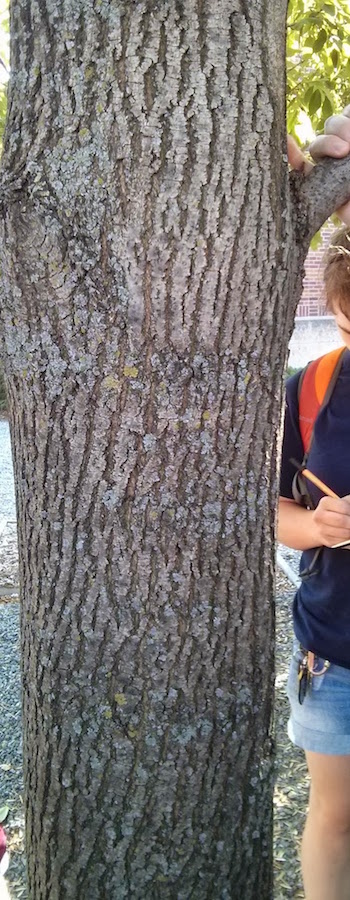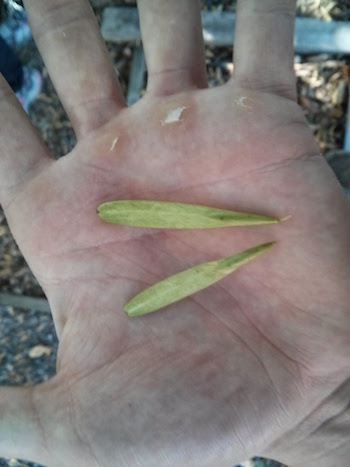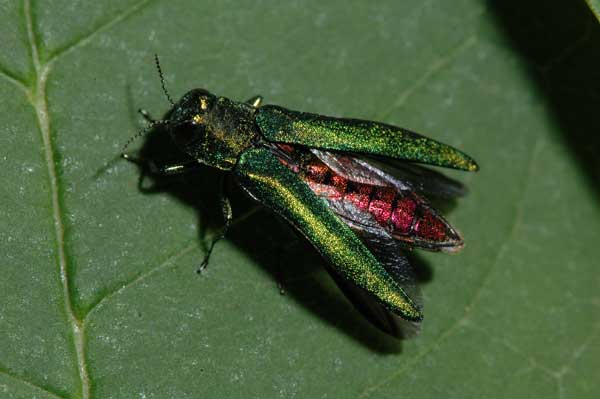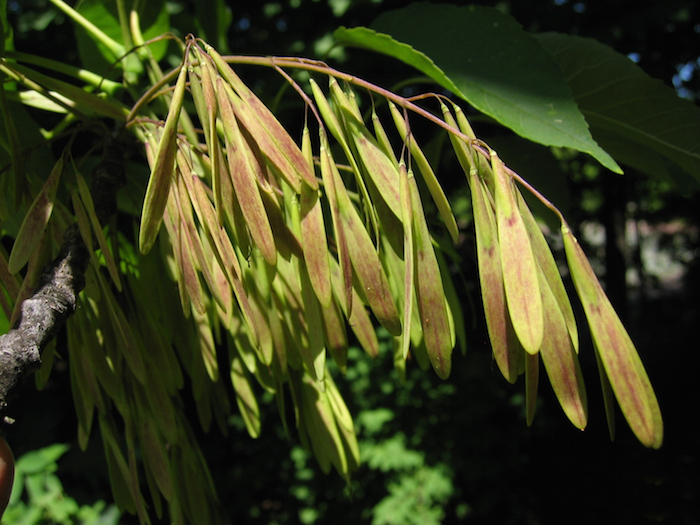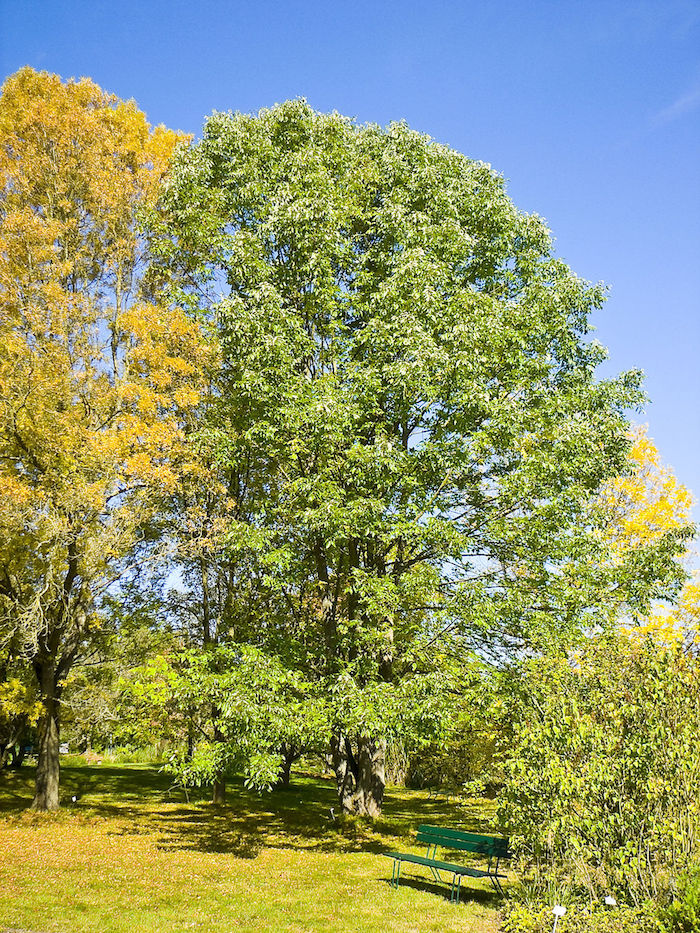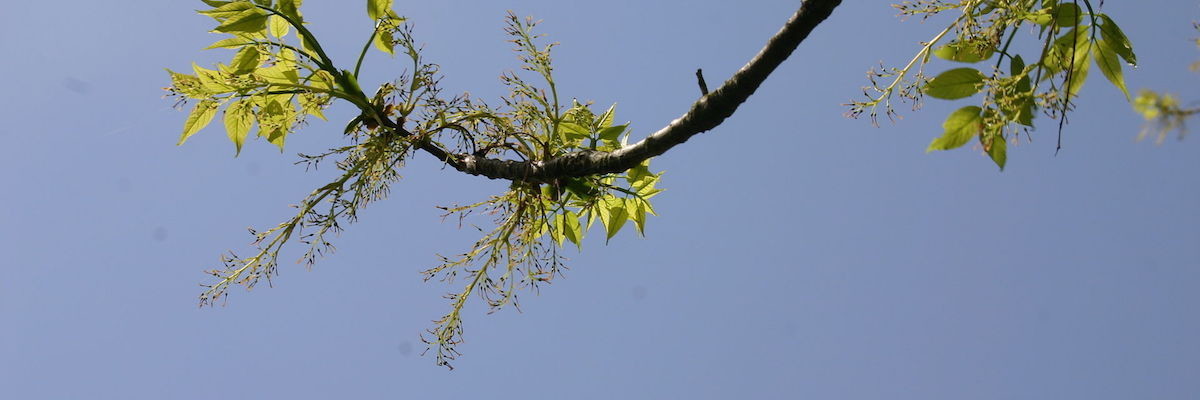
Description:
White ash is a large, native shade tree that is becoming increasingly rare in Minnesota. Leaves are opposite and compound, with 5-9 short-stalked, ovate leaflets. Leaflets sometimes have a few teeth near the tip. White ash trees are usually dioecious, meaning a tree will have only male or female flowers. Both sexes of flowers are small and numerous, and open as greenish-purple. Female flowers develop into numerous samaras, which hang in clusters and disperse in the wind. The bark is white to gray, with large furrows and ridges.
Ash wood is hard, durable, and flexible and as such has many uses. It is perhaps most famously used for baseball bats, but also for furniture, boats, snowshoes, and numerous other implements. White ash also has numerous ethnobotanical uses; it has been used as an aphrodisiac, to cure fevers, and to alleviate bug bites and lice. The common name is derived from the white bark.
White ash is becoming less and less common in Minnesota due the presence of the Emerald Ash Borer (Agrilus planipennis), an invasive Asian pest. It was first found in Minnesota in 2009, and since has killed millions of trees. Minnesota has historically had a large concentration of ash trees, with over a billion trees, but the presence of EAB has been a disaster for the native population. EAB bores into the ash tree and eventually girdles and kills it. Many ash trees on the University of Minnesota campus, as well as in the Twin Cities, have been removed due to EAB damage.
To help combat the spread of EAB, do not transport firewood over long distances, and learn to identify EAB. See below for more information.
Issues:
Emerald Ash Borer is a major pest of White ash, causing millions of tree deaths in Minnesota. Ash decline, or ash dieback is another issue, and the trees are sensitive to several environmental pollutants, such as sulfur dioxide and ozone.
Other Resources:
Photo Credit: Public Domain CC by 2.5
